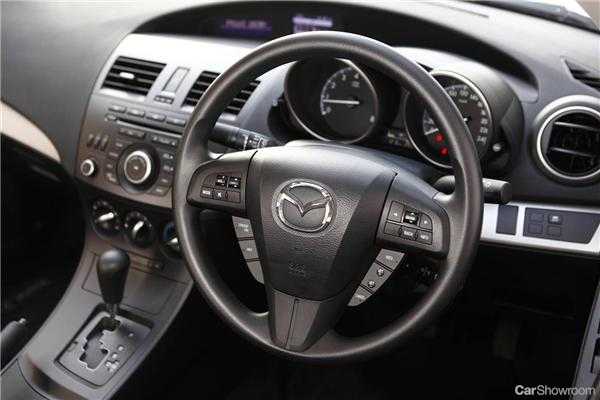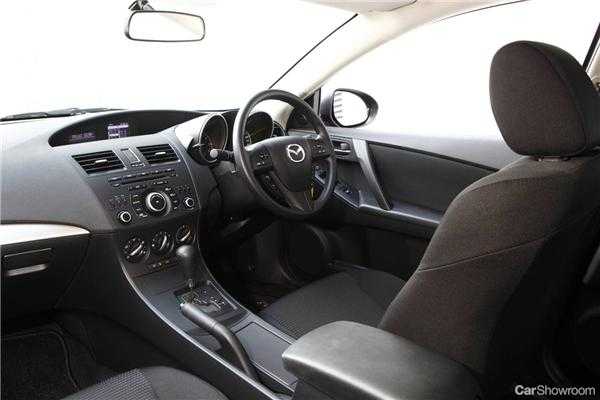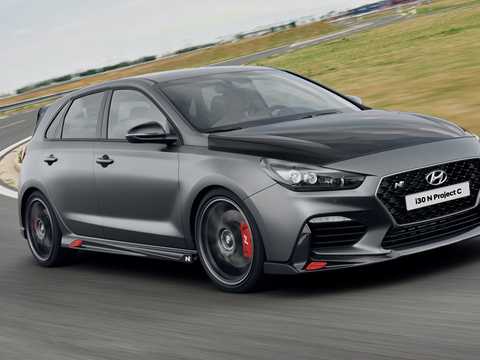How good is the Mazda3? Good enough to be Australia’s number one best-selling passenger car outright in 2012. And good enough to boast an overflowing trophy cabinet bursting with ‘Car Of The Year’ awards from every continent.
Those strong Australian sales must be particularly galling for Mazda’s European rivals who have introduced newer, competitively-priced models. Seems local buyers value Mazda 3’s looks, performance, price and reputation ahead of flashier newcomers.
Mazda3 Neo Overview
Car Showroom has just tested the entry-level Mazda3 Neo hatchback, it's also available in a sedan . You get a lot of car for $22,330 (five-speed automatic) – that’s $1,000 less than 12 months ago.
As part of the most recent running changes for the Mazda3, engineers focused on detail changes to improve the driving dynamics and enhance refinement. For example the secondary chassis floor has been thickened, the bodyshell stiffened and both suspension and steering systems have been recalibrated.
Mazda3 Neo Engine
Mazda3 steals a significant edge over many small car rivals in the form of its 2.0-litre, four-cylinder engine. Maximum power is 108kW at 6500rpm and peak torque of 182Nm arrives at 4500rpm.
Like all Mazda engines, the ‘3’s’ naturally-aspirated 2.0-litre delivers power smoothly across the range with a pleasing exhaust note and good mid-range acceleration for hills and freeway merging.
Fuel economy is good too – 8.2l/100kms for the Neo automatics we tested.
Mazda3 Neo The Interior
Standard across the Mazda range and prominent in the ‘3’ is a noticeable quality feel for the interior soft materials (seats, headliners etc). In fact at the most recent update, Mazda introduced some new seat materials for the Mazda3.
Same for instruments – Mazda sticks with simplicity for the twin-meter design with nice back-lit graphics (grey coloured in the Neos we tested). To the left of the driver is the compact multi-information display screen.
Again we liked the sporty three-spoke steering wheel which adjusts for rake/reach for an optimized driving position.
Audio is a single CD six-speaker system with the usual compatibility features.
Rear seat accommodation is on-par with others in this segment and for luggage capacity in the Mazda3 you can chalk-up 430-litres for the sedan and 340-litres for the hatchback.
We did deduct points for some of the trim plastics which were hard and don’t exude quality to the same degree as the rest of the interior.
Mazda3 Neo Exterior & Styling
Minor changes were included in the latest running changes for the Mazda 3 and highlight the attention to detail of Mazda’s stylists and engineers. For example there’s a new front bumper with a revised shape for the lower section, new fins under the bumper and the front tyre deflectors protrude further forwards – all to reduce the turbulence of air entering the radiator and to channel air down the side of the car for better stability.
Other changes saw the introduction of a more athletic look for the front-end with a revised fascia, updated five-point grille and round fog lights.
Mazda also gave both sedan and hatchback models a new rear bumper design and introduced new-design alloy wheels (15-inch on the Neo models tested).
Overall the Mazda3 with its prominent ‘Mazda-style’ grille, complex fender design and nicely curved roof remains one of the best-lookers to emerge from the Mazda design studios and still looks sharp when parked against newer-design small sedans and hatchbacks.
Mazda3 Neo On The Road
With a focus on enhanced refinement, as part of the most recent updates, Mazda engineers took to the Mazda3’s McPherson strut/multi-link rear suspension and wrought some changes as well as beefing-up the bodyshell for extra refinement. Not too much though as the current generation ‘3’ is a multi-award winner from hundreds of automotive journalists in every corner of the globe.
As a result, Mazda says the latest Mazda3 rides flatter and is quieter inside.
Changes to the EHPAS power steering system delivered easier low-speed maneuvering and enhanced feel at speed.
For us, the bottom line remains unchanged and the Mazda3 is still the best non-European small car for enthusiast drivers. In fact it gives the likes of Volkswagen Golf and Ford Focus a run for their money.
There’s a solid feel about the Mazda3 when you tackle the twisty stuff – cohesiveness in its response to steering input which you only get in cars with well-sorted suspension (front and rear). And there’s immediate feedback when you turn in.
Of course part of that story is the response of Mazda3’s 108kW/182Nm 2.0-litre. While the sporty Mazda3 SP20 models score a six-speed automatic transmission, the Neo models tested use a five-speeder which to be frank is one of the best combinations amongst the small car fraternity.
Inner city maneuverability is a Mazda3 strong point with good visibility and a compact 10.9-mherre turning circle.
Yep, for driving dynamics the Mazda3 is one of the best.
Mazda3 Neo Challenges
That extra suspension refinement is good, but in direct comparison to say the Volkswagen Golf and Ford Focus Mazda3’s front end is still a tad harsh on poor roads and when traversing tram and train track crossings.
And at night, the reflection of illuminated multi-function display on the windscreen was annoying.
Mazda3 Neo Verdict
For us, the Mazda3 is still the one for non-European small cars. And even though the ‘3’ isn’t the freshest design in this league, we reckon Mazda’s style remains a standout…in fact, for us (and styling is a personal thing), the sedan still sees-off all-comers in the looks department.
Combine those good looks, smooth 2.0-litre engine, great driving dynamics and Mazda’s hallmark quality and it’s hard to pin any weak points on the Mazda3.
And of course these days, you can add value-for-money as an attribute right across the Mazda range. Seems the sales success being enjoyed by Mazda Australia has given some strength to the locals when it comes to negotiating buying prices from Head Office in Japan and new car buyers ‘Downunder’ are the beneficiaries.
Mazda3 Neo The Competition
The Car Showroom benchmarks in the small car segment are both German – the Ford Focus and Volkswagen Golf (the latter only a hatchback).
In the Focus lineup, Mazda3 competes in dollars with the Ambiente grade and the ‘3’ has an edge with the Focus Ambiente (hatchback and sedan automatics) priced at $24,290. On the plus side, we love the German manufacturing quality and driving dynamics of the Focus and while the Ambiente is powered by a 92kW/159Nm 1.6-litre, four-cylinder engine, the automatic transmission is a six-speed.
Volkswagen Golf’s Mazda3 Neo equivalent is the 77TSI – a turbocharged 1.2-litre, four-cylinder with 77kW/175Nm. You’ll need a bit more coin with the automatic version (a seven-speed) stickered at $24,490. Volkswagen wrote the book for small car dynamics and the Golf and is still the one others aspire to.
Definitely worth a look is the Hyundai i30. While driving dynamics are smidge behind Mazda3 and the Germans, the all-new i30 ($22,990 for the Active automatic) delivers head-turning looks and a nice 110kW/178Nm 1.8-litre engine driving through a six-speed automatic transmission.
Thumbs-up: Front suspension a tad harsh over the rough stuff; some trim plastics don’t match the class/quality of the rest on the interior
Thumbs-down: BRAD LEACH































